Call for Submissions

Planning to submit your paper? Check the contributor guidelines!
The submission call for the upcoming edition will be open from November 18 to December 9, 2024!
The Pax et Bellum Journal is looking for academic papers written in English, produced by bachelor’s or master’s level students or recent graduates that are relevant to the field of peace and conflict. We will publish papers between 3,000 and 10,000 words (references excluded), with strict enforcement of the upper limit. All lengths of articles between 3,000 and 10,000 words are welcome; we do not favour any specific length within this range. Papers with multiple authors are accepted; please clarify whether there is a main author or all authors contributed equally to the writing process. Papers are expected to be of first-submission – if this is not the case a waiver giving us the right to publish the paper must be included. Papers should not be put before another journal for consideration at the moment of submission – if this is the case, an explanation to the Editors is required.
If published, authors will receive a certificate of publication, recognizing their contribution to an academic journal.
Aims and Scope
Pax et Bellum Journal is an open-access, student-run academic journal in Peace and Conflict Research. The journal serves as a platform for students and welcomes all articles that contribute to the academic discourse on a wide range of peace and conflict issues. We do not favour any specific academic background; all writers passionate about peace and conflict studies are encouraged to share their research and perspectives with us.
Editing process
Contributors must submit their piece of work as a Word, OpenOffice or RTF document to the Pax et Bellum Journal platform. PDFs are not accepted.
The editing process consists of two rounds of peer-review, followed by a final round of editorial review. This process is interactive and iterative: you will have opportunities to defend your writing and content choices; please argue your statements when disagreeing with the Editors, especially when referring to substantial issues. In this way, we intend to guarantee accountability and cross-examination, as Contributors and Editors will be able to engage in constructive debates while editing articles.
Please respect deadlines, but remember that we are open to discuss flexible terms according to evolving conditions.
Language style
American English and British English will be both accepted, provided that the style is consistent throughout the entire paper.
E.g. ANALYSE and ANALYZE are both accepted.
When using acronyms, please be consistent: U.S. or US, U.N. or UN.
Mandatory formatting rules
Required settings:
- Font: Times New Roman.
- Size: 12 pt.
- Space: 1.5 spaced.
- Alignment: justified.
- Page number required.
- NO PREVIOUS FORMATTING: no page header and footer.
- Citation: APA 7th Edition.
- 2.5 cm margins.
- Non-English words and book titles should be italicised.
Divide your text into clear paragraphs that help the reader following your argumentation.
We also recommend the use of headings and subheadings to better signal the structure of your article.
Where available, provide URLs for the references.
Quotations
Use double inverted commas when directly citing someone else’s words: “_____”.
If your quotation exceeds three lines of the original work, you should separate it from the text of your article by centering and italicising the cited passage.
When removing or adding a word from a direct quote, please make use of brackets: […], [insert word].
Use single inverted commas for emphasis on a word or expression: ‘_____’.
Essential elements
At the beginning of the paper, the contributor should suggest a title, or ask the Editors to write one. An abstract should be written at the top of the paper: it should be rich in key words, concise, and aimed at signposting the content (± 200 words). A recommended list of keywords can also be suggested to the editorial team.
Images and graphs
Images (copyright-free), own graphs, diagrams, and any other visualisation expedients are encouraged. They must be submitted alone in a separate file, as well as within the article at the appropriate points, rather than at the end.
Plagiarism and double-submission
Plagiarism will not be tolerated. We as a Journal adhere to the highest academic standards in this regard; accordingly, we use plagiarism detection software in order to assess the originality of the submitted work.
We only accept pieces that have never been published before.
Once published in the Pax et Bellum Journal, the Contributor will retain rights on their intellectual product; that said, re-submission of an article published on P&BJ to another Academic Journal, Website, Blog, or other media, is not recommended and the Editorial board should be consulted before re-submissions.
Submit your paper to the Pax et Bellum Journal platform. The submission call for the upcoming edition will be open from November 18 to December 9, 2024.
